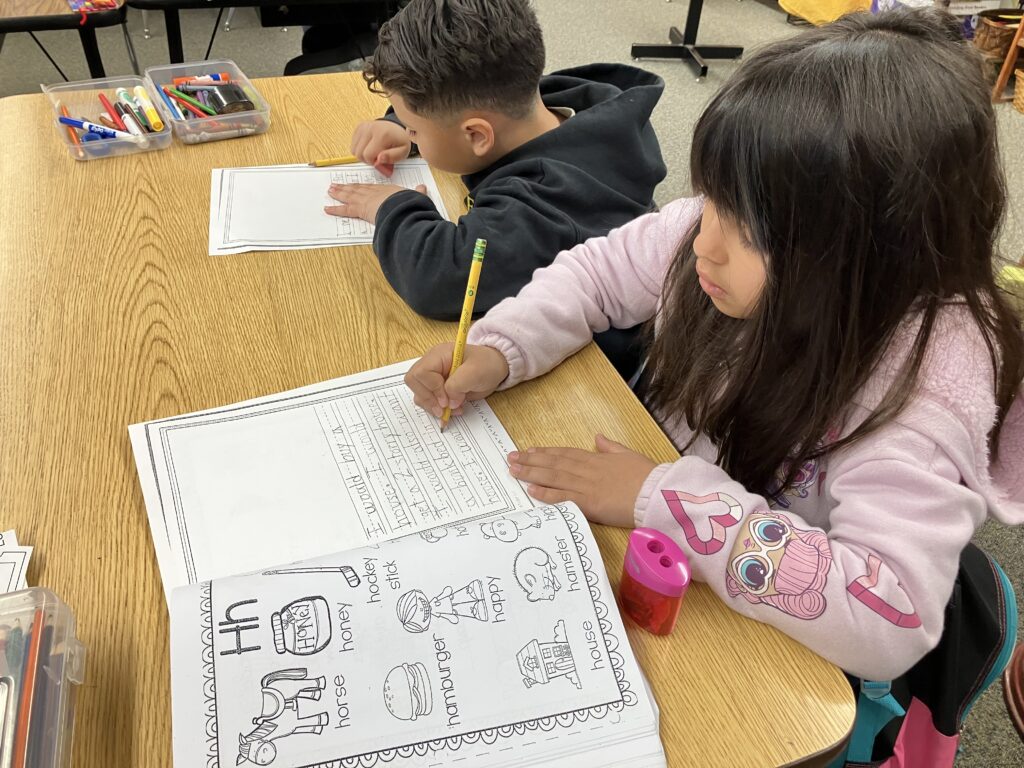
Credit: Ekrulila/Pexels
Despite the fanfare surrounding its launch in August 2022, the California Kids Investment and Development Savings program (CalKIDS), a state initiative to help children from low income families save money for college or a career, has been underutilized as eligible families lack awareness about its existence.
According to a March 6 announcement from CalKIDS, 300,000 students and families — a fraction of the 3.6 million eligible across the state — have accessed the state-funded account.
That translates to about 8.3% of eligible students statewide with similar low percentages locally, which Devon Gray, president of the advocacy organization End Poverty in California (EPIC), said illustrates the gap between a program run by the state and local implementation.
CalKIDS is meant to help families save for college or career training after high school by creating a savings account and depositing between $500 and $1,500 for eligible low-income students in the public school system. The program was created to help students, especially those from underserved communities, gain access to higher education.
Click here to find out if your child is eligible.
While pleased with the state’s investment of nearly $2 billion for the program, Gray said successful implementation of CalKIDS is key.
Though supported by the governor, the program doesn’t have enough staff to consistently spread awareness across the large, diverse state, said Joe DeAnda, communications director with the California State Treasurer’s Office, which oversees the CalKIDS program and its outreach efforts. He cites a lack of resources, also an explanation for school districts that are having trouble informing families about the program.
Consequently, families across the state are confused, uninformed or unaware of CalKIDS and face challenges in even claiming the accounts once aware, EPIC leaders say.
The state’s low percentage of claimed accounts may seem indicative of poor program adoption, DeAnda said, but CalKIDS credits its ongoing outreach and collaboration to raise awareness of the program among schools, community-based organizations and government agencies as the reason for the “major milestone” of hundreds of thousands claiming their accounts so far.
Fresno Unified, one of the state’s largest school districts, hopes to reach a milestone of its own.
The school board voted on March 6 to create a districtwide campaign to raise awareness about the CalKIDS accounts that are available to most of its students — a move that districts statewide can emulate, advocates say.
In Fresno Unified, only 6.64% of eligible students have claimed their accounts — partly because the district has not publicized the program as it can and should, Andy Levine, a member of the district’s board of trustees, said during the board meeting.
Levine proposed a resolution requiring the district to make a systemwide commitment to increase student awareness and access to the accounts.
He cited studies indicating that having as little as $500 in a college savings account makes a student three times more likely to enroll in college and four times more likely to graduate than a student without savings.
“I believe (it) is critically important to our city overall, with tens of millions of dollars collectively waiting for our students to utilize,” Levine told EdSource.
Program gives $500 to eligible low-income students

Gov. Gavin Newsom in 2022 invested about $1.9 billion in the accounts; Fresno Unified students are eligible for about $30 million.
According to program details, low-income public school students are awarded $500 in a CalKIDS account if they were in grades 1-12 during the 2021-22 school year, were enrolled in first grade during the 2022-23 school year or will be in first grade in subsequent school years.
An additional $500 is deposited for students identified as foster youth and another $500 for students classified as homeless.
Children born in California after June 2023, regardless of their parents’ income, are granted $100. Those born in the state between July 1, 2022, and June 30, 2023, were awarded $25 before the seed deposit increased to $100. Parents who link the CalKIDS account to a ScholarShare 529 college savings account are eligible for an additional $50 deposit for their newborns.
The California Department of Education determines eligibility based on students identified as low income under the state’s Local Control Funding Formula, and the California Department of Public Health provides information on newborns.
State outreach does not address all the challenges
During the program’s initial rollout, Newsom described the initiative as California “telling our students that we believe they’re college material.”
“Not only do we believe it,” Newsom said at the time, “we’ll invest in them directly.”
Since then, Newsom and his office have regularly highlighted the program, spokesperson Izzy Gardon said. The governor’s backing garnered a lot of attention for the program in its first year, DeAnda said. Most Fresno County students who have claimed the accounts did so in the first year. Across the 33 school districts in Fresno County, 6,058 students claimed the account in the 2021-22 school year when the program launched; last school year, 404 registered the account, based on state data provided to EPIC.
Millions of dollars have been allocated to ensure families take advantage of the program.
According to the 2022-23 state budget, enacted in June 2022, the state increased its one-time general funding by $5 million for local program outreach and coordination with CalKIDS as well as another $5 million in ongoing funding for financial literacy outreach to educate families about the long-term benefits of a savings account with CalKIDS.
Besides outreach and collaboration with schools and organizations, the multimillion-dollar outreach efforts include marketing the program through partnerships, mailers, webinars, advertisements, social media and outdoor signage. With the state’s budget allocation, the program is also in the process of launching a $7.5 million media campaign to supplement current outreach.
Informing newborn parents looks slightly different
The mailers are one-time notification letters to inform students about the CalKIDS account and how to access it, according to the state treasurer’s office. Between November 2022 and June 2023, the program sent letters to over 3.3 million students. In January, the program sent notification letters for nearly 270,000 first graders who became eligible after last school year.
Every month, the program sends notification letters to newborn parents. Nearly 4% of more than 536,000 newborns eligible for CalKIDS had claimed the accounts, as of Dec. 31, according to CalKIDS data. As of March 1, the program had sent more than 634,000 letters to newborn parents since the program began, according to the treasurer’s office.
In addition to the mailers, the program has sent emails to over 316,000 parents to notify them of their newborn’s CalKIDS account. The California Department of Public Health, which provides information on newborns, sends the program email addresses of parents who provide the contact information during the birth registration process.
CalKIDS does not have access to student or parent email addresses from the education department.
Gray, the president of EPIC, said many in low income communities ignore the mailers because they don’t trust the communication or question its credibility, even if it has an official letterhead.
Advocates told EdSource that the success of other state outreach, such as webinars, depends on families being aware, and awareness — or a lack, thereof — is the No. 1 challenge related to CalKIDS account access. Other issues include the state’s large population as well as the workload of state officials who are tasked with promoting and offering various programs, not just CalKIDS.
DeAnda said it’s challenging for the small CalKIDS team, a group of about four people, to reach millions of families spread across the different rural and urban communities in California.
And even though CalKIDS has asked districts to promote the program as well, especially for students who will soon graduate, some districts also struggle with having enough resources to do their own outreach beyond what the state has done, Gray said. The program, according to the state treasurer’s office, offers an online toolkit for schools and districts to download and use fliers or posters, content for emails or social media and videos for CalKIDS outreach.
If families are not exposed to or participating in state or local outreach, they won’t know or learn about the program.
According to Gray, during EPIC’s listening tours across the state, he often asked families and community leaders about CalKIDS.
“And, usually, it’s blank stares,” he said.
Widespread confusion
In places such as San Francisco and Oakland, there is confusion about CalKIDS because the communities have local college savings account programs of their own.
Of over 33,000 eligible students in San Francisco County, just over 1,600 students, or 5%, have claimed the CalKIDS accounts. In Alameda County, where Oakland is located, more than 100,000 students are eligible, but just over 8,000, or 8%, have claimed their accounts.
Even when families are aware, claiming the account has proven difficult, said Jasmine Dellafosse, the director of organizing and community engagement with EPIC.
The seed deposits into the savings accounts are automatic, but families must claim the accounts by registering online — a step that less than 4,200 eligible Fresno Unified students had taken as of last school year.
To check student eligibility and register the account, families must enter students’ Statewide Student Identifier (SSID), a 10-digit number that appears on student transcripts, the CalKIDS website said.
Dellafosse said many Fresno Unified families don’t know where to find the ID numbers, and there’s often no straightforward answer on how to obtain them. The CalKIDS website instructs families to contact their child’s school or school district if they’re unsure of how to locate the number.
Board member Elizabeth Jonasson Rosas, at the March 6 board meeting, noted the difficulty she had in finding the SSID number for her child. She contacted the CalKIDS program, which referred her to the state mailer she said she never received.
For a board member who works in the district and has access to resources to struggle to identify the number, Dellafosse said, shows the barrier families have and will experience.
“We’re not just seeing that happening in Fresno,” she said, “we’re seeing that happening everywhere.”
With the school board’s resolution, Rosas said the district has an opportunity to help its families participate in the program and a chance to work with the state to make the process easier.
Fresno Unified leads state in effort to raise awareness
More than 60,000 of the district’s 70,000 plus students could qualify for $500, while more than 1,000 students experiencing homelessness or living in foster care qualify for up to $1,000 more, according to the board resolution proposed by Levine.
Going Deeper
EPIC leaders want other districts to make systemwide commitments for increased awareness of and access to the CalKIDS accounts.
“We can’t just stop at Fresno,” Dellafosse said.
As California is a large, diverse state, the outreach strategies that work in one region may not work in another. Still, advocates say there are ways to address the barriers impacting CalKIDS account access, such as:
- Providing CalKIDS welcome kits with the SSID numbers.
- Rewriting informational materials to a third-grade reading level so more families understand the content.
- Having local leaders educate families.
- Advocating for multilingual outreach at the state level.
- And bolstering communication between districts and the state.
“You have to know the money is waiting for you,” he said.
According to the resolution, which includes the goal of increasing student account access from less than 7% to at least 25%, there is a “clear need for intentional district outreach, education and support.”
By June, Fresno Unified will create a CalKIDS engagement plan to outline strategies for account registration and data collection for all eligible students and set goals to ensure graduating students use their funds for post-secondary plans.
Levine said that the district’s plan can be a model for how school districts across the state can engage and educate families about the CalKIDS program.
Based on the resolution, the district’s commitment to making families aware of the program can increase access to funding, improve students’ chances of attending and graduating from college, and improve current statistics showing that less than 25% of Fresno County residents over 25 have a bachelor’s degree.
“As someone who comes from a very disadvantaged family, I know the difference that some dollars in a savings account can really make,” board member Veva Islas said.
“No matter what the amount is, as long as there is some thought about sending children to college and some planning, (there) seems to (be) a very high correlation with that being the end result.”





